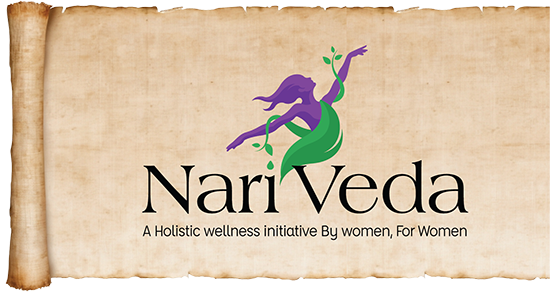Ayurveda & Yoga Hitahitam Sukham Duhkhamayustasya Hitahitam Mananca Tacca Yatroktamayurvedah Sa Ucyate
The grand treatise, which contains the details of healthy and longevity (ayu) and which defines what is good (hita) and what is bad (ahita) for the four different types of ayus (namely, hitayu, ahitayu, sukhayu and dukhayu, concerning different conditions of diseased or healthy life ) is Ayurveda

Ayurveda is one of the oldest holistic healing systems and was developed in India 5000 years ago. The principle of Ayurveda is the wellness of human being and that depends on the balance between three elements: body, mind and spirit. It is the only one of its kind that addresses the physical, emotional and spiritual aspects of our well-being. It promotes healthy living through healthy lifestyle. Ayurveda is more than a mere system for curing ailments. The healing principle of Ayurveda mainly focuses on natural lifestyle modification.
There are two purposes to Ayurveda:
-
Swaasthya Rakshanam
Swastha means one who is healthy. So, the first purpose is to protect or preserve the health of the healthy people. This is the preventive aspect of Ayurveda.
-
Aaturasya Vikara Prashamanam
Aatura means one who is diseased. So, to cure the disease of the diseased person is the second purpose. This is the curative aspect of Ayurveda.
We, at Favourite Kerala Wellness, help you to get a healthy and holistic lifestyle through authentic Ayurveda, Yoga & Meditation.

Principles:
The three classic texts on Ayurveda – Sushruta Samhita, Charaka Samhita and Ashtangahridaya – shed light on the ethics to be followed by Ayurveda practitioners and patients. In Ayurveda there are seven basic tissues (dhatu): plasma (rasa), blood (rakta), muscles (māmsa), fat (meda), bone (asthi), marrow (majja), and semen (shukla).
Ayurveda proclaims that the bodily substances can be divided into five classical elements called Panchabhuta – earth, water, fire, air and ether. There are also twenty gunas (qualities or characteristics) which are considered to be inherent in all substances. These are organized in ten pairs. These elements and their combination or proportion determine the constitution of our body. They are accordingly clubbed into three ‘humours’ or body types or what Ayurveda calls the Doshas. They are called Tridoshas: wind (vāta), bile (pitta) and phlegm (kapha), and state that equality (sāmyatva) of the doshas results in health while inequality (viṣamatva) results in disease.
Doshas:
In Ayurveda there are seven basic tissues (dhatu): plasma (rasa), blood (rakta), muscles (māmsa), fat (meda), bone (asthi), marrow (majja), and semen (shukla).(To be added after doshas
Ayurveda proclaims that the bodily substances can be divided into five classical elements called Panchabhuta – earth(Prithvi), water(Jala), fire(Agni), air(Vayu) and ether(Akasa).

Vata
Composed of air and governs all bodily movements.

Pitta
Composed of fire and water and governs heat, metabolism, digestion and other transformation processes.

Kapha
It is watery humour that binds the elements in the body.
Curative & Eliminative Procedures
According to the body condition caused by the imbalance of dosha, Ayurveda can be classified into Curative and Eliminative procedures:
-
Curative – Samana
This is to cure acute diseases and illnesses and includes all or any of these seven methods:
1.Panchana (using digestives or medicinal herbs)
2.Deepana (generating heat by increasing digestive fire)
3.Kshut (fasting),
4.Thrit (regulating fluid intake)
5.Vyayama (exercises)
6.Athapa (sun bathing)
7.Marutha (breathing exercises) -
Eliminative – Shodhana
This remedial system cleanses the body to cure chronic diseases and long-term ailments. The great elimination process of Panchakarma is an important part of it. Panchakarma or the five actions purifies the human body of all toxins accumulated over the time and eliminates undigested metabolic wastes from the body channels. By this process, Panchakarma not only cures specific conditions but also offers a preventive way of protecting the body from diseases. The five actions of Panchakarma are:
1. Vamana (induced vomiting)
2. Virechana (purgation)
3. Kashaya Vasti and Sneha Vasti (two kinds of medicated enemas)
4. Nasya (nasal medication)
5. Rakta moksha (bloodletting)

Diagnosis
Ayurveda has eight ways to diagnose illness, called Nadi (pulse), Mootra (urine), Mala (stool), Jihva (tongue), Shabda (speech), Sparsha (touch), Druk (vision), and Aakruti (appearance). Ayurvedic practitioners approach diagnosis by using the five senses. Hearing is used to observe the condition of breathing and speech. The study of the lethal points or marma is of special importance.
At Favourite Kerala Ayurveda & Spa, We begin with three kinds of diagnostic procedures in accordance with the conventional Ayurveda. 1) Darshana – Observing, 2) Sparshana – physical examination and 3) Prasna – Interrogating. The doctors determine your body constitution through broad examination using these methods of diagnosis and arrive at a course of treatment. We follow and practice authentic Ayurvedic system of healing with its specialized Ayurveda doctors, Panchakarma therapists and traditional Ayurvedic herbal medicines made and tested by quality manufacturers in the State.


